Nokia plans to release its own Android smartphones and an overview of the latest update to Nokia Z Launcher .
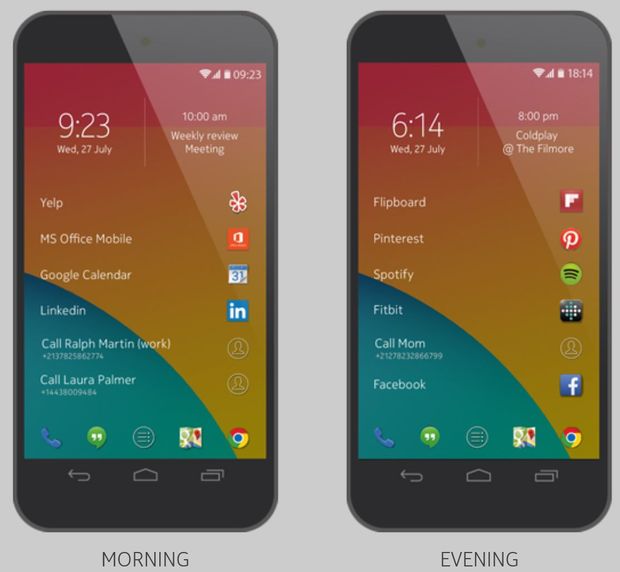
Stay Here, I'll Be Back
Ever since Nokia's mobile division departed Microsoft, brand fans have been wondering if we'll see more smartphones from the Finnish company. Will Nokia dare to try to start from scratch by re-creating the mobile division, or will it just sell its famous brand to someone else? Over the years, Nokia has already denied and confirmed such rumors several times, even managed to release its tablet, but there is still no clarity about smartphones under the Nokia brand.
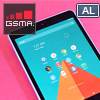 |
MWC 2015. Nokia N1 Tablet |
Most likely, such smartphones will see the light of day – however, from Nokia there really will be only a logo. In any case, this is how you can understand the words of the head of Nokia. Recently, Rajiv Suri said that the company plans to develop a concept for a smartphone, and then give the brand for licensing to everyone (We would simply design them and then make the brand name available to license). This is clearly not about ordering the production of your own devices at third-party factories. The conversation is about selling the brand, albeit in a somewhat milder form. The company has long sold its mobile division, and it no longer has specialists of the required profile. There is only a name and a logo left, only they can also interest someone. And the one who pays for it will order the music, so who and what will develop there is a big question.
Link to news
What can such a vague wording speak about? Firstly, we will have to completely forget that Nokia is a Finnish company, because in fact, we will again talk about an ordinary “Chinese”. Perhaps not even the worst – there are already enough such good, but nothing particularly remarkable devices in the Celestial Empire. And secondly, it is hardly worth counting on worldwide sales. At least at first. Most likely, the first smartphones will be sold mainly in China, as was the case with the Android Nokia N1 tablet.
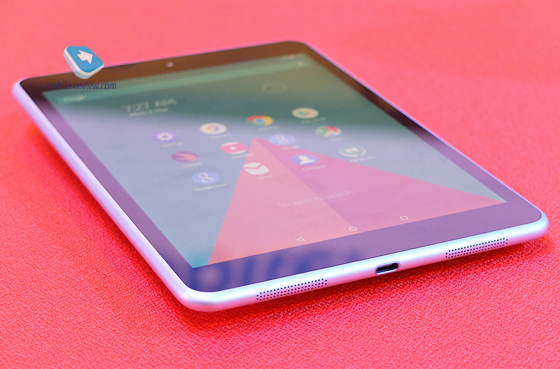
It is very likely that the appearance of the smartphone will be designed in the style iPhone. Of course, they won't talk about direct copying of the speech, and not at all for fear of running into a lawsuit from Apple. It makes no sense to simply compete with devices like Lenovo s60 and s90 of 'Chinese Nokia'. Not to mention the fact that the clone iPhone running on Android and with the Nokia logo is already an outright farce, even by Chinese standards. But you shouldn't expect anything bright and unusual from the design of the first phones. An unusual design is always a risk, and the manufacturer does not need it at this stage.
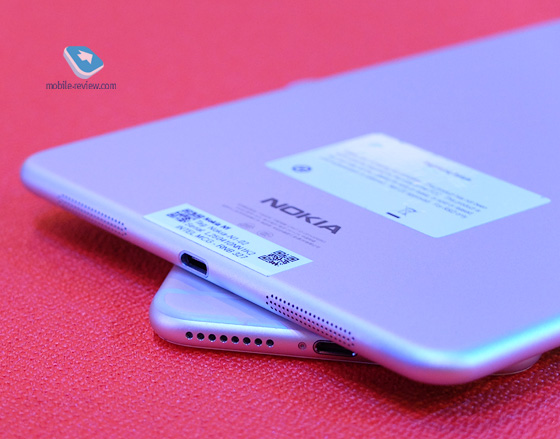
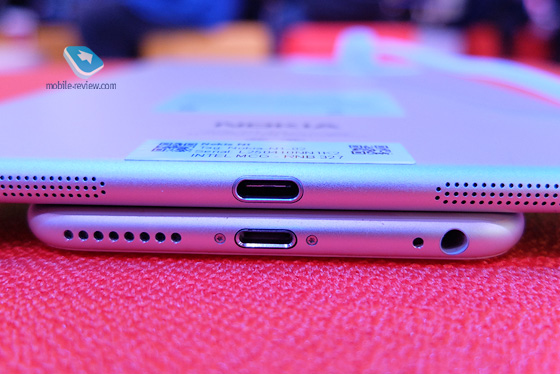
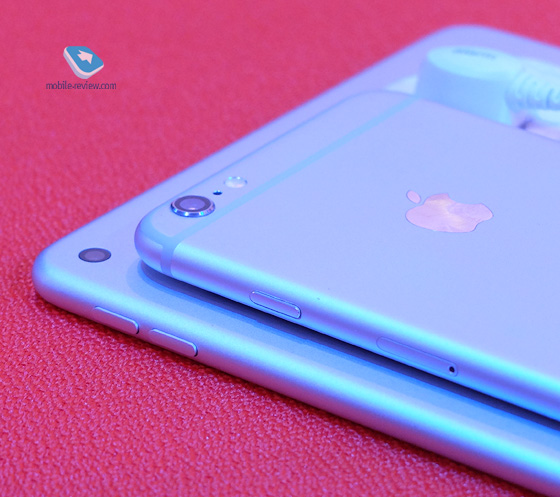
As for the software component, then some kind of proprietary shell on top Android will for sure. There is clearly no need to expect something of the level MIUI or Sense, at best such a shell will simply not interfere very much. At worst, it will turn quite a convenient 'out of the box' Lollipop interface into something indigestible. Moreover, the second scenario is even more likely – no matter who covets a Finnish brand, a little-known developer or manufacturer such as Foxconn, he clearly will not have experience in creating shells of the level of well-known brands.
Alas, despite all the efforts of Google, not so many manufacturers are ready to use 'clean' Android in their devices. After all, your own shell is one of the easiest ways to stand out from the crowd of competitors and attract the attention of users with the help of some unusual (albeit completely unnecessary) functions. And the fact that all these bells and whistles as a result will only complicate the user's life and add technical problems to the device, nobody cares.
It is very likely that the smartphone will use Nokia's existing launcher – Z Launcher. Moreover, it continues to develop, albeit very slowly, so the company clearly has some plans for it. The last major update to the launcher came out earlier this month and brought several expected things, including widget support.
Nokia Z Launcher
Z Launcher has been available on Google Play for quite some time now, and its current version is proudly named 1.2.3-Beta. And it should be noted that the beta status is striking almost immediately. The first questions arise during installation. According to the official website, the launcher can be installed on most smartphones with Android 4.1 and higher. In practice, I could not install it in the standard way either on HTC One (M8) or on Xiaomi Mi 2, Google Play insists that the devices are not supported, although both smartphones are already updated to Android 5.0 long ago.
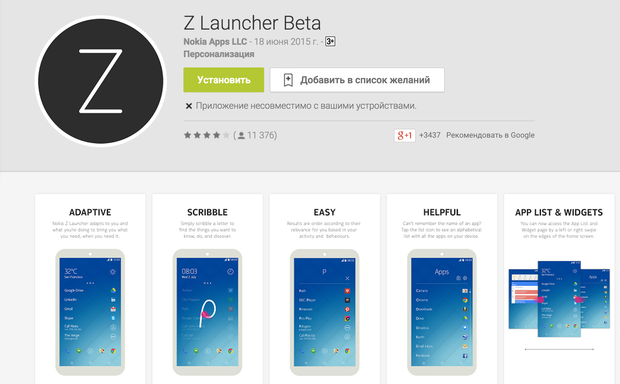
However, there is nothing wrong with that – the launcher can be downloaded from the official website without any problems. Although there were some pitfalls here too – the site must be opened from a mobile phone, it will not work to download the apk file from a computer. Why all these difficulties is not clear.
The launcher itself is made in the style of minimalism, everything in it is arranged extremely simply and clearly. But how convenient is another question.
When you start the launcher for the first time, a short 'tutorial' is shown, consisting of several interactive slides. Even for those who are practically unfamiliar with English, it should not cause much difficulty.
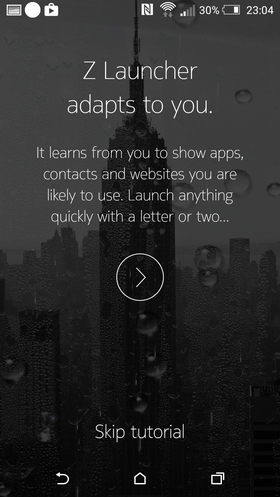

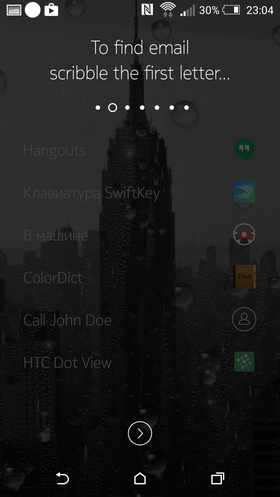
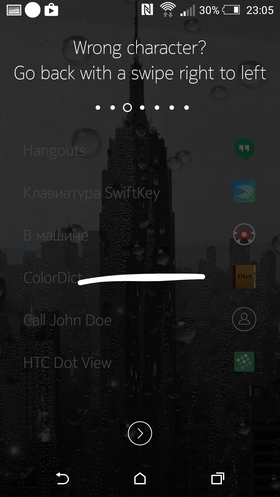

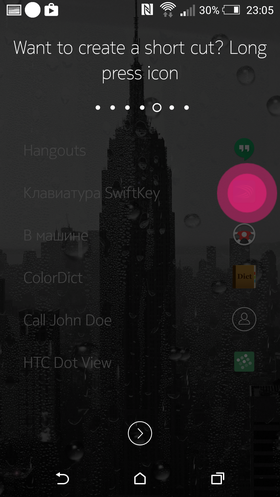
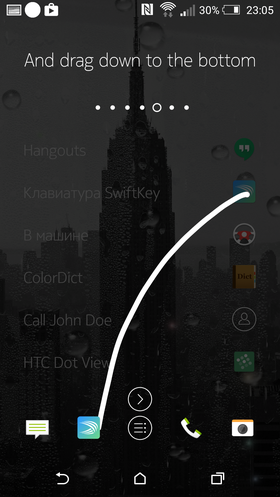

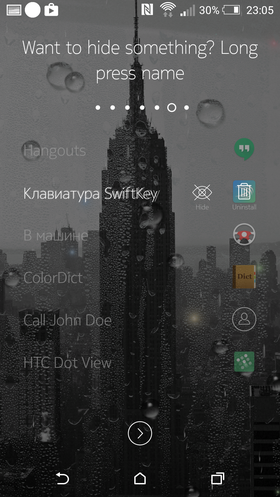
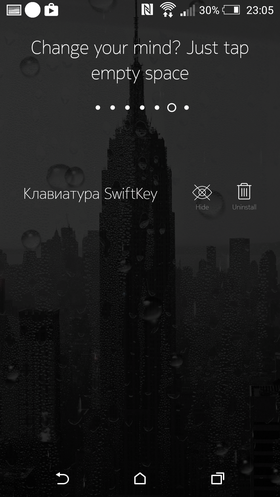

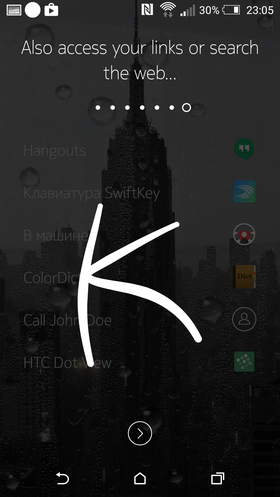
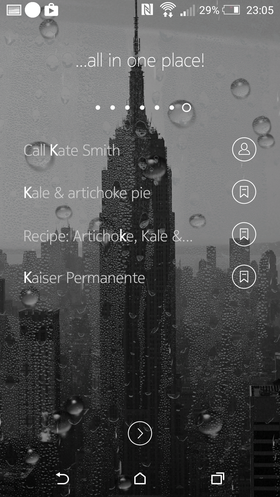

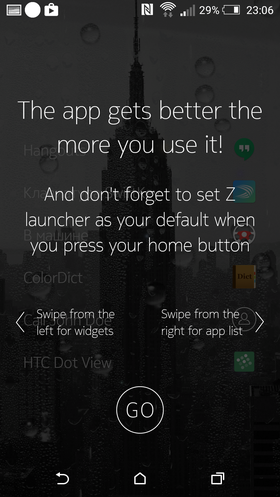
One of the main 'chips' of the launcher is the original approach to finding and launching applications. The user does not need to look for the program icon in long lists and cumbersome menus, just write the first 1-2 letters with his finger right on the main screen. Then the launcher itself will offer you several of the most suitable options, and we are talking not only about applications, but also about contacts, bookmarks, settings and other things. English letters are recognized simply 'with a bang', but Cyrillic support is not yet available, which is extremely annoying.
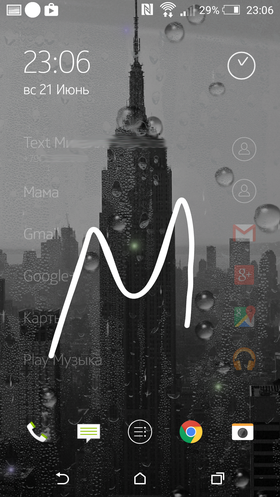

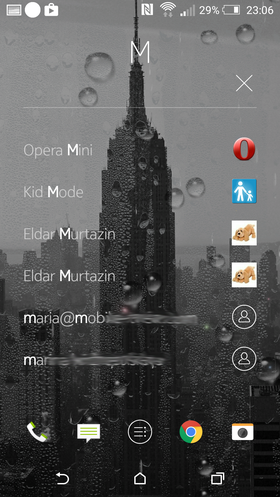
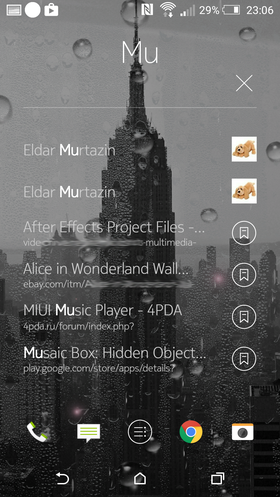

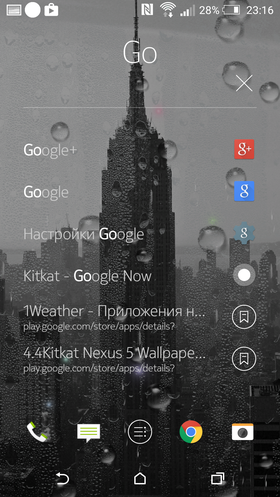
In theory, in any case, you will not need to use such a search very often, because all the necessary shortcuts will always be at your fingertips. Z Launcher will take care of this too, automatically tracking the most frequently used applications at a particular time of day. In some ways, this approach resembles the principle of Google Now, and the sensations from it are about the same – it is already pulling for a funny and sometimes even useful 'trick', but not for a serious tool yet. Alas, not a single smartphone can read thoughts yet, so misfires in the work of such 'intelligent' assistants are inevitable. The situation is a little saved by the dock bar, into which you can drag any icons of your choice.
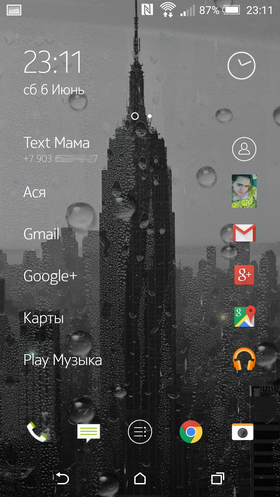

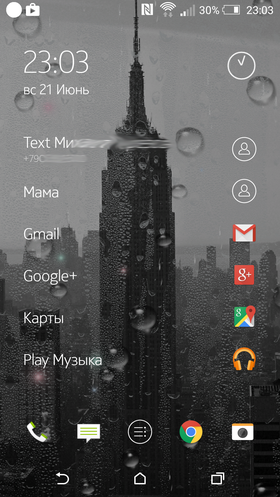
In addition to the central screen, the launcher has two additional ones located on the sides. You can scroll through them using the usual horizontal swipe, one problem – on the central screen, you can only swipe along the upper part, otherwise the stroke will be recognized as the letter 'L'. Theoretically, a swipe from the very edge of the screen avoids this, but in practice, in half of the cases, it is still recognized by the smartphone as a letter. Probably, you can get used to all this, but this method cannot be called intuitive, and at first it is rather annoying. Especially if the smartphone has a very solid size, and you have to use it on the go.
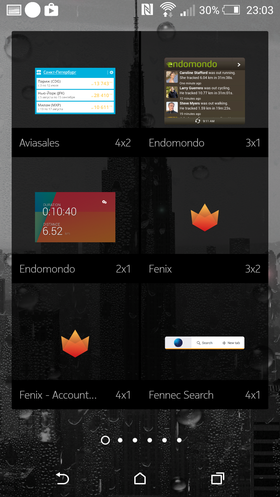

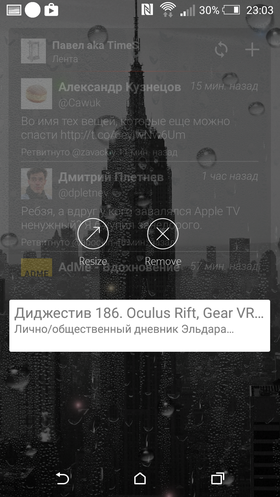
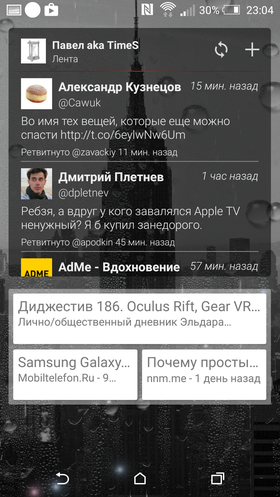

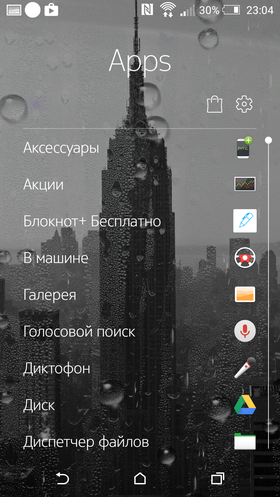
The left screen is reserved for widgets, since now Z Launcher has got support Android – widgets. The right screen is an alphabetical list of all applications. It also contains the Google Play icons and settings.


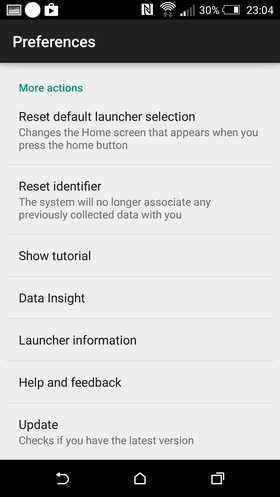
Outcome
It is clear that you need to make a discount on the beta version of the launcher, which can have many small nuts and flaws. It is clear that many necessary things like Cyrillic support or more responsive controls will appear sooner or later. And that all the 'smart' features will grow wiser over time.
The trouble is that the problem here is not even so much in the implementation as in the idea itself. Whatever one may say, but mobile devices are still very, very far from real artificial intelligence, and today all these too smart and independent launchers, assistants and assistants simply do not work. Even if you take such elementary things as the choice of program icons before the planned trip. Z Launcher is not even able to adapt to my 2/2 work schedule, and even more so, it cannot predict when, where and why I will leave the house. At what point I need information about traffic jams and a car navigator, when I need to watch the movement of public transport, when I need to open the metro map, and when – applications for finding a cozy cafe, he will never understand. What can we say about his attempts to guess what I want to do on the road – play with a new toy, read a book, surf the Internet, watch twitter and so on.
In any other launcher, once placing shortcuts on the desktop, I know for sure that I can start any program in exactly two clicks. Either by opening the folder and clicking on the icon, or by making one horizontal swipe and then clicking. Over the past couple of years, these movements have been brought to automatism, I launch any program without hesitation. For example, I do not hesitate to use the keys 'Home' or 'Back'. For some reason, Z Launcher is trying to make this process easier for me and as a result only confuses everything, constantly changing the icons in places and slipping under my arm what I don't need at the moment.
Interactive search is a little more fun, even if in real life most users don't really need it either. But there has been such a thing as Google Gesture Search in the world for many years. Which works at least as well, while it can be easily installed on any Android smartphone and supports a bunch of languages, including Russian. What is the point of changing the launcher for the sake of this function, and even more so a phone that does not even support the Cyrillic alphabet?
 |
Google Gesture Search: Search in one go |
Instead of an afterword
If another Nokia smartphone appears in the world, then the chances of seeing it in our country are few. But even if we imagine that they will officially start selling it in our country, and not just anywhere, but in federal retail, the prospects for the “Chinese” Nokia are still very vague. Nostalgia is strong, but short-lived. For a long time, she alone will not be enough. And to expect something more from a 'Chinese' who decided to leave at the expense of a well-known brand, it seems to me, is still impossible. Standard design, standard hardware, a very controversial shell, a minimum of own developments and original ideas. The result is a standard B-brand device, nothing interesting.
Who I really feel sorry for in this situation are the sales assistants who will try to explain to the buyers the difference between the “American” and “Chinese” Nokia, both of which are trying to act as the heirs of the Finnish Nokia.
What are you expecting from a Nokia smartphone?

